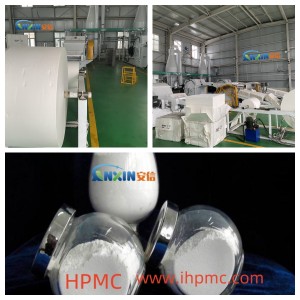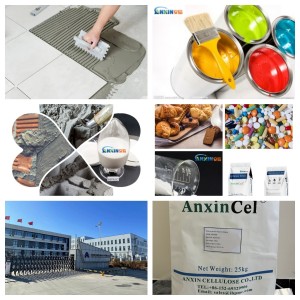Hydroxypropyl Methylcellulose (HPMC) is a chemically modified nonionic cellulose ether. Due to its excellent solubility, film-forming properties, thickening, emulsification, and biocompatibility, it is widely used in a variety of fields.
1. Building Materials
HPMC is an indispensable additive in the construction industry, particularly in cement mortar, gypsum products, tile adhesives, and exterior insulation systems (EIFS). Its main functions include:
Water retention and thickening: In cement and gypsum systems, HPMC effectively locks in moisture, extending the working time and preventing cracking or strength loss caused by rapid water loss.
Improving workability: It enhances the lubricity and flowability of mortar and tile adhesive, ensuring smoother application and more secure adhesion.
Enhancing adhesion and anti-sagging properties: Adding HPMC to tile adhesives and putty powder prevents the material from sliding during vertical application, ensuring precise application. Therefore, HPMC has become an irreplaceable functional additive in modern dry-mix mortars for construction.
2. Pharmaceuticals
In the pharmaceutical industry, HPMC is widely used as an excipient and functional material:
Tablet coating and matrix materials: HPMC can be used as a matrix material for controlled-release formulations, enabling sustained or controlled release of drugs.
Tablet binders and film-forming agents: They ensure stable tablet formation and provide good disintegration properties.
Capsule shell materials: HPMC capsules, as a plant-based alternative, have gradually replaced some gelatin capsules, meeting the needs of vegetarians and those allergic to animal ingredients.
Their non-toxic, non-irritating, and biocompatible properties make them very safe for use in pharmaceutical formulations.
3. Daily Chemicals
In the daily chemical industry, HPMC, as a functional polymer ingredient, is primarily used as a thickener, stabilizer, and humectant:
In shampoo and shower gel: It improves the fluidity and wall adhesion of the system, enhancing the user experience.
In toothpaste: It acts as a binder and stabilizer, ensuring a uniform, non-segregating paste. Cosmetics: Provides moisturizing and film-forming properties in facial masks and lotions, while also enhancing the product’s smooth feel.
These applications demonstrate the unique value of HPMC in improving product texture and stability.
4. Food Industry
HPMC is widely used in the food industry, typically as a thickener, emulsifier, and stabilizer:
Baked Goods: Helps maintain food moisture, improves taste, and extends shelf life.
Low-Fat Foods: HPMC can mimic the mouthfeel of fat, reducing calories without sacrificing flavor.
Beverages and Dairy Products: Prevents separation and sedimentation, maintaining a consistent taste.
Due to its safety and edible properties, HPMC has been certified as a food additive in multiple countries.
5. Other Applications
In addition to the aforementioned applications, HPMC also plays a role in the following:
Coatings and Paints: As a thickener and stabilizer, it improves coating application and storage stability.
Ceramics and Metallurgy: As a molding aid, it enhances green body strength and facilitates sintering. Agriculture: Used as a suspending agent and binder in pesticide formulations to improve the longevity of the drug’s efficacy.
Plastics and polymer processing: Used as a dispersant or adjuvant to enhance product performance.
Due to its unique physical and chemical properties, hydroxypropyl methylcellulose (HPMC) has penetrated widely into the construction, pharmaceutical, daily chemical, food, and other industries. It not only improves product performance but also enhances user experience and production efficiency. With increasing demand for environmental protection, safety, and functionalization, HPMC’s application areas will continue to expand, becoming a core adjuvant and solution in more industries.
Post time: Sep-17-2025

